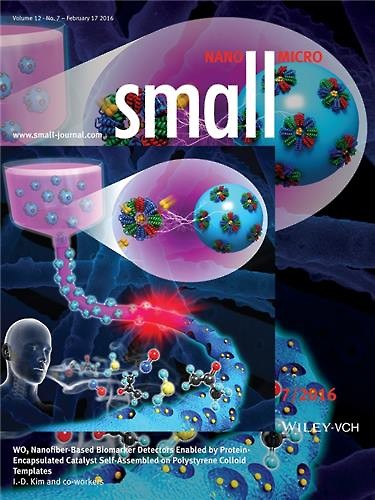
The February edition of the science journal “Small” (Image : Ministry of Science, ICT, and Future Planning)
SEOUL, March 3 (Korea Bizwire) – A group of South Korean scientists have developed a way to detect major diseases such as cancer or diabetes through respiration, a feat which can bring a seismic change to the methods of diagnosing patient illnesses, Seoul’s science ministry said Thursday.
A research team at the Korea Advanced Institute of Science and Technology (KAIST) developed a sensor capable of analyzing components of patients’ respiration and providing details on their health conditions.
The Ministry of Science, ICT, and Future Planning said the development, funded by the government, was made possible because gases emitted by patients include various volatile organic compounds that are possibly connected to different diseases.
For example, a patient with diabetes tends to have more acetone in their breath. Previously, similar sensors failed to effectively find the substances selectively, as they only existed in small quantities.
Traditional methods of disease diagnosis are blood testing or magnetic resonance imaging, which means that the new sensor can make such processes much easier, allowing patients to more promptly respond to their diseases.
The sensor can also help patients keep track of their health through smartphones or other wearable devices.
“(The sensor) can be applied in analyzing air pollution as well as other gas-detecting devices that connect to Internet of Things technology,” said KAIST professor Kim Il-Doo.
The study is also posted on February’s material science journal “Small,” under the title “WO3 Nanofiber-Based Biomarker Detectors Enabled by Protein-Encapsulated Catalyst Self-Assembled on Polystyrene Colloid Templates.”
(Yonhap)






